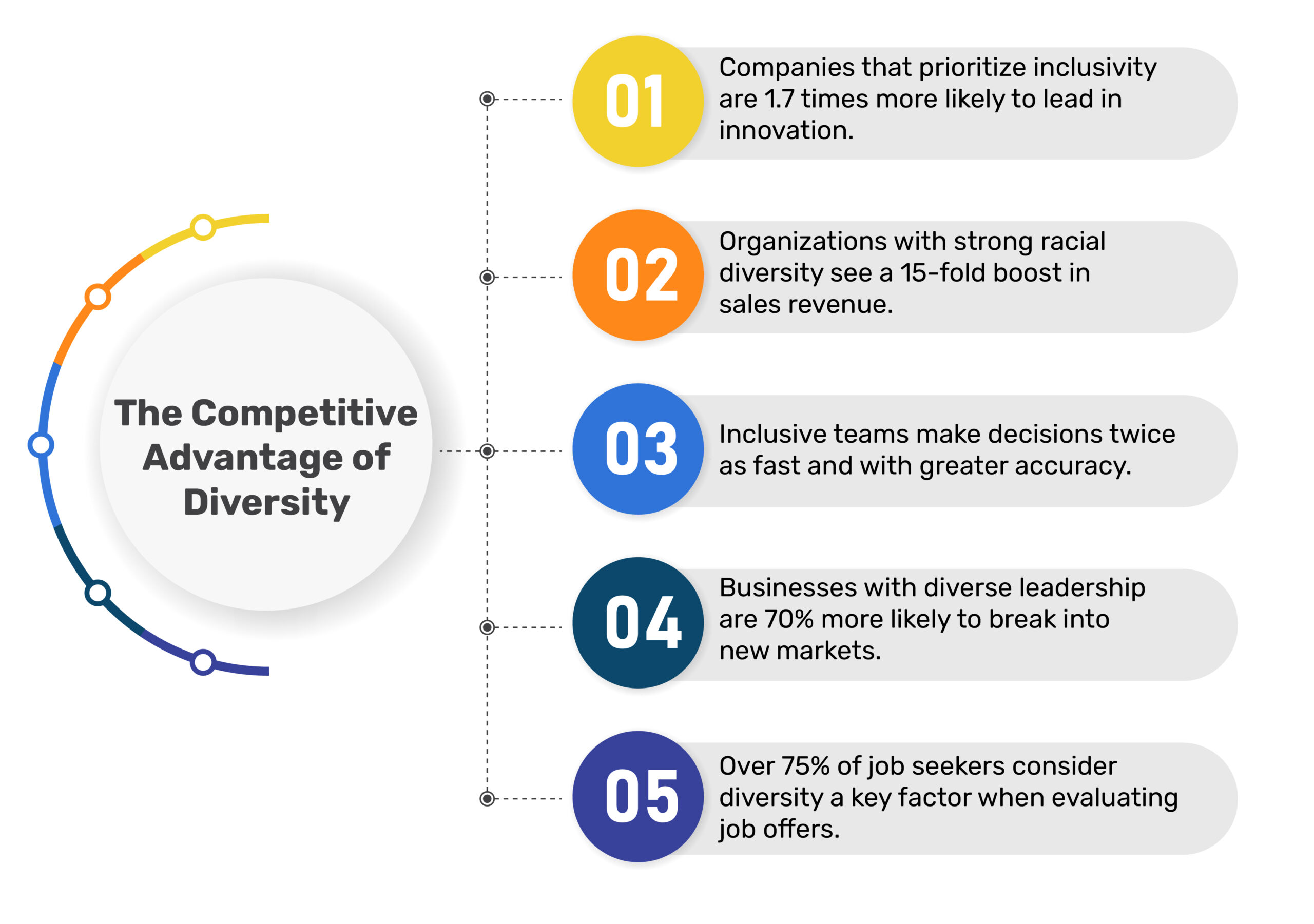Most organizations treat diversity and inclusion (D&I) like a marketing campaign—big statements, a few hires to boost the numbers, and an annual training session no one remembers. That approach isn’t working. Employees see through it. Customers see through it. And in 2025, the organizations still playing that game will fall behind.
Diversity isn’t about looking good—it’s about making better business decisions, increasing profitability, and avoiding costly mistakes that come from a room full of people who all think the same way.

Where Organizations Keep Failing
Most organizations think they’re making progress because they’ve hired a Chief Diversity Officer or run a few unconscious bias workshops. But here’s why their efforts fall flat:
- Diversity at the bottom, homogeneity at the top: If leadership isn’t diverse, decision-making isn’t either. Hiring more women and people of color for entry-level roles while keeping executives the same doesn’t solve the problem.
- No accountability: If your diversity strategy isn’t tied to performance reviews, promotions, or executive compensation, it’s a nice-to-have, not a must-do.
- Focusing on hiring but ignoring retention: If diverse employees leave because they don’t feel valued, your hiring efforts mean nothing.
- Surface-level inclusion: Inclusion happens in pay equity, promotion rates, leadership opportunities, and daily culture.
The Playbook for 2025: What Actually Works
Many organizations talk about diversity and inclusion, but few turn it into real action. Here’s what actually works if you want to build a workplace where people feel valued, engaged, and motivated to stay.
1. Be Transparent About Pay—Or Employees Will Find Out Anyway
Employees now have easy access to salary data through sites like Glassdoor. If they discover unfair pay gaps, they won’t stay silent. Pay transparency builds trust and improves retention.
How to Make It Happen:
- Conduct pay audits to find and fix unfair salary gaps.
- Set clear salary ranges for each role and share them with employees.
- Make pay equity a leadership priority, not just an HR task.
- Talk openly about pay policies so employees understand how salaries are determined.
2. Build a Leadership Team That Reflects Your Workforce
Organizations with diverse leadership teams perform better, make smarter decisions, and attract top talent. If leadership looks the same as it did 10 years ago, your organization will struggle to grow.
How to Make It Happen:
- Promote from within by creating leadership programs for underrepresented employees.
- Set goals for leadership diversity and track progress.
- Pair employees with mentors who help them advance into leadership roles.
- Make sure executive succession plans include diverse talent.
3. Stop Using ‘Culture Fit’ as an Excuse to Reject Talent
Many organizations unknowingly reject great candidates because they don’t “fit the culture.” This often means hiring the same type of people over and over again, limiting fresh ideas. Instead, focus on culture add—bringing in talent that makes your team stronger.
How to Make It Happen:
- Train hiring managers to spot and eliminate bias during interviews.
- Hire for skills, perspective, and problem-solving abilities, not just personality match.
- Expand where you recruit—look beyond your usual networks.
- Standardize interviews so that decisions are based on talent, not gut feelings.
4. Hold Leaders Accountable for Inclusion
If managers who ignore diversity keep getting promoted, it sends a message that inclusion isn’t important. Make sure leaders are measured on how well they support a diverse and inclusive workplace.
How to Make It Happen:
- Tie diversity and inclusion efforts to manager performance reviews and bonuses.
- Set clear expectations that leaders must build inclusive teams.
- Recognize and reward leaders who actively create diverse, high-performing teams.
- Take action against behaviors that undermine inclusion, including missed opportunities for diverse employees.
5. Track Real Progress, Not Just Hiring Numbers
Diversity isn’t about how many underrepresented employees you hire. The real measure of success is who gets promoted, who stays, and who leaves.
How to Make It Happen:
- Track promotion rates—do all employees have equal opportunities to advance?
- Analyze retention data—are diverse employees leaving faster than others?
- Conduct exit interviews to learn why employees leave and fix problems.
- Check pay equity at every level—not just at the time of hiring.
6. Make Employees Feel Valued Every Day—Not Just in Diversity Training
Diversity and inclusion aren’t about a one-time training session. They should be part of daily interactions, leadership decisions, and workplace culture.
How to Make It Happen:
- Create mentorship programs that help employees grow into leadership roles.
- Encourage open conversations about workplace culture and improvement.
- Build Employee Resource Groups (ERGs) to provide a voice for underrepresented employees.
- Ensure diverse employees are part of major projects and decisions.
7. Invest in Continuous Learning for Your Workforce
To truly embed diversity and inclusion, employees and leaders need ongoing training—not just a yearly workshop.
How to Make It Happen:
- Offer on-demand learning that employees can access anytime.
- Train managers on inclusive leadership and bias awareness.
- Provide courses on workplace culture, diversity, and leadership development.
- Use eLearning platforms like KnowledgeCity. Our courses are designed by the U.S.-based university professors and industry experts to ensure relevant, up-to-date, and practical training.
Diversity Isn’t a Trend—It’s a Business Imperative
Diversity and inclusion aren’t just ideals—they’re key drivers of innovation, profitability, and long-term success. But achieving real progress requires more than good intentions. It takes ongoing education, actionable strategies, and leadership commitment.
At KnowledgeCity, we offer expert-designed Diversity and Inclusion courses that go beyond surface-level training. Our courses equip your team with the skills to build inclusive leadership, eliminate bias, promote pay equity, and create a culture where every employee thrives.
The organizations leading in 2025 won’t just be checking a box—they’ll be outperforming, out-innovating, and outlasting the competition. Give your workforce the tools to succeed with training that makes a measurable impact.
Subscribe to Our Newsletter
Join 80,000+ Fellow HR Professionals. Get expert recruiting and training tips straight
to your inbox, and become a better HR manager.

 KnowledgeCity
KnowledgeCity 










